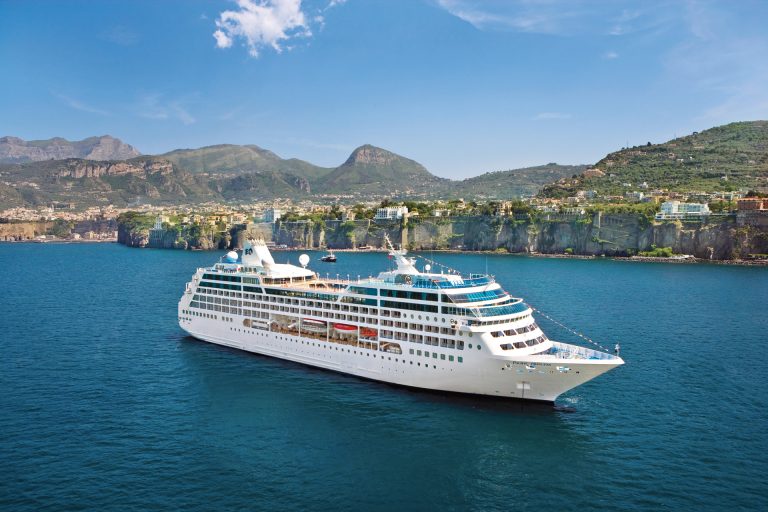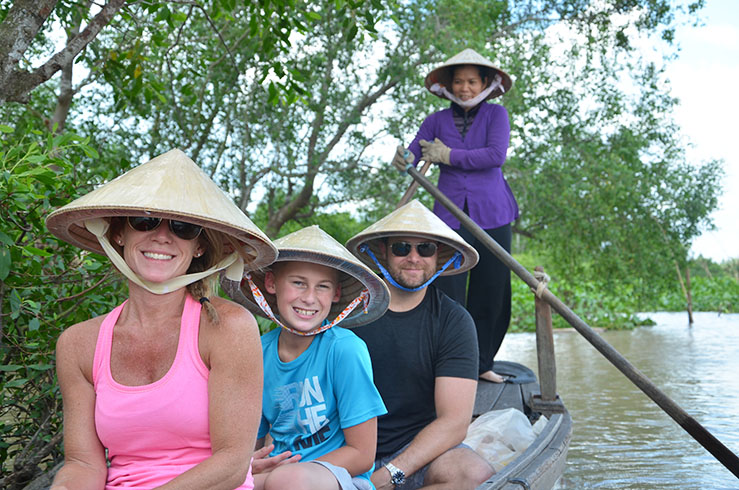Vietnam in general and Saigon, Hoi An, Ha Noi… in particular are always interesting and attractive destinations in the heart of foreign tourists. Friendliness and hospitality are the first things that come to mind of many people when they think of these destinations.
Along with that, beautiful landscapes, cultural values, fascinating history, not to mention local food are unique factors that attract tourists. However, being in tandem with positive values is a few negative things.
Specifically, similar to other tourist attractions in the world, there are currently many tourist traps set out for foreigners when coming to Vietnam. So what does “tourist trap” mean?
1. What do tourist traps in Vietnam look like?
“Tourist traps” are deceptive tricks of business households and locals targeting foreigners when traveling to Vietnam. Actually, their true goal is not you but your cash!
Currently at tourist attractions in Vietnam, there are some common scams such as fake taxis, traditional motorbike-taxis, street vendors or selling souvenirs at unbelievable prices. Let me tell you a specific example of scammer’s tricks.
When I was walking along Pham Ngu Lao Street, District 1, a few cyclo drivers would approach. They offered me a city tour for a few hours on cyclo, so did traditional motorbike-taxi drivers. I kept going to Bui Vien Street, a popular area for backpackers. At Bui Vien, when I was drinking coffee, I was hounded by a lot of shoes – shiners. Besides, there are also many other popular tricks to cheat foreigners.
In the majority, tourist traps and scams occur in famous tourist attractions or areas such as Bui Vien Street, Independence Palace, Cathedral of Notre Dame, Ben Thanh Market, Hoi An or Hanoi Old Quarter…
When visiting these landmarks, international visitors are just “bewildered golden deers” always in the sights of “the hunters”. “So why are tourist traps and scams so rare in local tourist destinations?” – Some foreigners have wondered.

2. Why do you often get trapped at the tourist attractions more than local places?
The reputation of these locations are probably the most likely explanation. When searching on Google with the keyword “top tourist attractions in Saigon/ Hanoi”, in a few seconds, you can see millions of results similar to destinations that I’ve mentioned. Therefore, tourist traps often happen there. So what about other local tourist attractions?
It’s less common and not mentioned regularly. You can only know about these places through recommendation of your friends or finding results on page 4,5,6… on Google. Of course, no one wants to put effort into something that does not generate many results. The most common problems for FITs at local places are language and transport. However, please ignore these problems! I will share these issues in more details in another article.
For now, in this article, I will continue to talk about tourist traps. How to avoid tourist traps in Vietnam? And what do you need to know before coming to Vietnam? I will answer honestly as if this were my own trip in Vietnam. So let’s start the journey!
3. How to avoid tourist traps when traveling in Vietnam?
3.1. Fake taxis
The place that you set your foot at first is no other than the airport. The first trap is called “fake taxis”.
So how was this tourist trap implemented? After leaving the airport, you would be approached and offered a trip by a lot of “fake taxi” drivers. Somehow, drivers could cooperate with some “operators” at the airport to put you in the trap.

Last year, an Indian tourist fell victim to this trap. He asked “the operator” at the airport to call for a cab then they called for him a fake taxi. This cab has faked everything from one of the top companies. In consequence, the Indian man had to pay 1,200,000 VND for a trip from Tan Son Nhat airport to Nguyen Hue Street, District 1, Ho Chi Minh City which is three times the real price.
The common trick of “fake taxis” is cheating their meter “without 000”. For example, you would have to pay 500.000 VND while the real price is just 50.000 VND. Fortunately, with some official regulations from authorities, “fake taxis” currently have been banned at the airport. However, they still appear mainly at many tourist destinations.
There are the two best companies in Vietnam, Vinasun (white) and Mai Linh (green). Some of their drivers are shady but the majority are honest. Unfortunately, there are many companies who fake similar names as well as matching colors schemes.
However, you can recognize the real one from the rest by some significant characteristics. Mai Linh and Vinasun always decorate their cabs with lots of branding elements. Meanwhile, “fake taxis” are rarely decorated. Besides, you can call their hotlines to book a taxi:
- Vinasun hotline: Vinasun Taxi
- Mai Linh hotline: Mai Linh Taxi
In addition, you can also use apps to book taxi for more safety. Grab and Be are my two recommendations for booking a taxi in Vietnam.

Visit our article of 15 actionable tips for Independent Travelers to get more helpful information
3.2. Motorbike taxis
Motorbike taxis – “Xe Ôm” in Vietnamese are notorious scams. Overwhelming callings from motorbike taxis could make you scared and obsessed when mentioning the traditional motorbike taxis in particular.
In fact, they offered not only foreign tourists but also Vietnamese. However, the price of a trip for Vietnamese and foreigners are completely different. Currently, “Xe Om” are all over and at every corners.

In touristy areas, motorbike-taxi drivers will approach and attract foreigners by their catalogues with lots of interesting images. Besides, they also offer a very cheap price for their motorbike-taxi tour, but do not feel happy too soon. Because they’re just simple tricks in their tourist traps.
The most common scam they pull is when they agree on a price for a trip that you have negotiated and then ask for more when you arrive at your destination. Their reason is that you must have misheard them.
Similar to taxis, there are some popular motorbike-taxi booking apps for you such as Grab, Be and Go Viet. Actually, these are applications that Vietnamese people are using regularly, especially Grab. I think this is an effective way for you to avoid the tourist trap from traditional motorbike-taxis.

3.3. Cyclo tour
Cyclo tour is also one of the attractive activities to foreigners. However, this is also one of the most popular tourist traps that I want to mention. The way to approach of cyclo drivers is similar to motorbike-taxis drivers. This scam happens in tourist attractions like Saigon, Hue, Ha Noi, Nha Trang and Hoi An.
- Last year, in August, a Japanese tourist had to spend 2,900,000 VND for just an under-1 km cyclo tour. According to him, he was offered a cyclo tour by a driver around Ben Thanh Market.
- On May 31, 2018 in Hue, 2 overseas Vietnamese had to pay an amount of 1,500,000 VND for 6 km to visit Hue city. In fact, the cost of this trip is just 200,000 VND.
- Also in August, a Korean tourist coming to Nha Trang also encountered this fraud. He had to pay 500,000 VND for a 20-minutes trip by cyclo. In addition, when reacting to the above price, he was also shouted at and profaned by the cyclo driver.
My advice is that you should book this service at reputable local travel companies. Based on the many price I have consulted, you only need to pay 10 USD for cyclo tour in 3 hours or 55 USD for half a day. If this service is not from a travel agency, do not “climb” on any cyclo!

3.4. Buying souvenirs
On any trip, everyone usually buys souvenirs for friends and relatives. However, please be careful with prices of these items. Because the initial prices offered by the sellers are always very high.
This happens mainly in touristy destinations such as Ben Thanh market and alleys around it, Hanoi Old Quarter, Hoi An … or any souvenir shops at tourist attractions. If you want to buy souvenirs from there, you should beat prices down to 50-60% of the initial prices.
Let’s think that haggling over prices is a game. Whoever has better negotiation wins. Actually, you should try to walk away if you can not negotiate. Then, these sellers could discount the price for you. However, I would like to recommend buying souvenirs from bookstore, big malls, supermarket… for high quality at a fixed price.
3.5. Taking photos with street vendors
In taking pictures of people, especially of the street vendors, just do it fast and discreetly. As usual, street vendors will ask if you want to use their bamboo baskets and conical hats (Non La) for some photo shoots. At this time, there are two cases that could happen:
- You must to pay to get the photos taken with these unique photo props
- You can take photos for free. Instead, they will ask you to buy in support of some items which they are selling.
Besides, there are many “coconut men” walking around the tourist attractions. They would offer to help you cross the road then let you take photos with the coconut carriage, then charging you 10 USD just for a coconut. Sometimes, they even chop off the coconut without your agreement and then what done is done, you have no other option but to buy it.

In any case, please be careful! Because no matter what, you might have to spend a lot of money for a few photos there! This scam of street vendors often happens in Hanoi, especially in Hanoi Old Quarter.
In my experience, you need to negotiate prices very firmly. Because once you buy without asking for the price first, get ready to be ripped off. So what happens if you argue? Get ready for some shouting and a crowd of people who do not really take kindly to foreign tourists cheating on locals.
Here are some tips for you:
- Use your smartphone to take photos fast and discreetly
- Do not talk or use their vendors as a photo shoot
- Just walk away and find Circle K stores for the coconut
3.6. Selling bird-toys
Particularly in Hoi An, the “selling bird-toys” is also a tourist trap besides the “taking photos with street vendors” trap. These are done by street vendors who usually bring colorful bird-toys to Hoi An. They shoot them into the sky to attract the attention of tourists. Then when foreigners ask to buy, they will negotiate a very high price. Currently, prices are around 200,000-300,000 VND per one. But, you could bargain for lower prices like 50,000-100,000 VND.

3.7. The two-shine
One of the other common tourist traps in Vietnam is “the two-shine”. If you are in a touristy area and wearing dress shoes; leather shoes; boots or whatever fancy shoes, please prepare to be hounded by shoe-shiners. Oftentimes, foreign tourists refuse these services.
However, the majority of shoe-shiners are children under 12 years old. They are skinning, small with a sunburned skin and an extremely poor look. Of course, most of us are moved by these pathetic images. They will ask to polish your shoes with an acceptable price.
But when they returned, the price has doubled. The reason was that the price was just for only one shoe. If you want to argue, my most sincere suggestion is still NOT to. Please trust me and keep calm!
Because underworld muscle gangsters are never too far away from there. The effective method to avoid this tourist trap in Vietnam is being aggressive to say “NO” when they approach you.

3.8. Playing blackjack with Filipinos
Coming back to Ho Chi Minh City – also called Saigon, it would be terrible if I miss this tourist trap – Filipino blackjack scam. The scammers’ aim is to snare foreign tourists who are traveling alone and have just arrived in Vietnam for the first time.
Though most travelers who are approached do not go along with the scammers, many foreigners have complained that the group is a nuisance. However, if you accept the invitation, you will play blackjack and win or lose as their wants.
At first, you will be shared some tips to win. And you actually win! After that, the bet money will eventually exceed the amount which you have. At this time, a person who has previously agreed to be your “secret partner”, winks and offers to lend you the necessary money.
With a mind of constant victor, I’m sure that it is difficult for you to refuse “this opportunity”. And this is the time for you to lose! I sincerely condole with that. But, the bigger problem is repaying the debt which you’ve just borrowed.
What do you think about this scam? It is easy to be cheated, isn’t it? So, if you want to avoid, please stay cool to reject and just walk away when they approach you.
4. Conclusion
There are some scams which I’ve experienced and want to share. In fact, tourist traps are common things of any tourist attraction. It could help you gain more experience to continue sharing with friends and relatives.
However, along with that, there are discomfort, dissatisfaction and quite anger. So, the best way to enjoy an amazing trip in Vietnam is to keep off tourist traps and scams.
You should refer to my article carefully and take notes if it’s necessary. In addition, there are suggested hotlines which you should know when coming to Vietnam:
- 112 – Emergency rescue
- 113 – Police
- 115 – Ambulance
- 024.3.94.23760 – Vietnam National Administration of Tourism
- 1080 – General Information Service
- 1088 – Consultancy Service
- 1081 – Yellow Pages Information and Consultancy Service
Seeking support from Embassies is also a wise choice. Finally, I wish all foreign tourists a great time in Vietnam. Vietnam always welcomes you!


